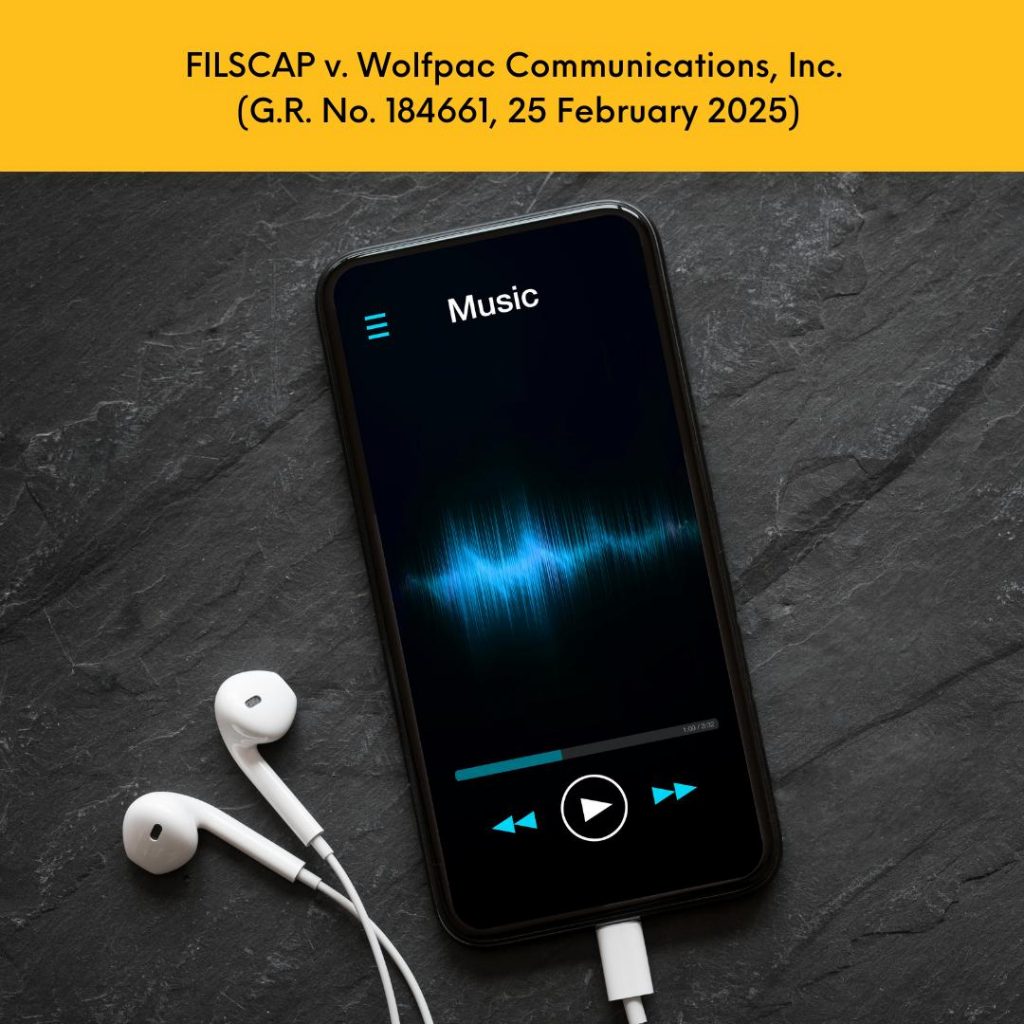
Published 30 June 2025, The Daily Tribune
Can listening to a 20-second preview of a ringtone before purchasing it amount to copyright infringement? The Supreme Court answered this in the negative in a case that strikes the right balance between intellectual property protection and consumer convenience: Filipino Society of Composers, Authors and Publishers, Inc. (FILSCAP) v. Wolfpac Communications, Inc., G.R. No. 184661.
At the heart of the dispute was Wolfpac’s mobile application and website that allowed consumers to listen to short samples of ringtones before deciding to buy them. FILSCAP—a collective of Filipino songwriters and composers—argued that this practice violated their copyrights and demanded the payment of license fees for what it claimed was a “public performance” of their musical works.
Wolfpac refused, invoking fair use and arguing that the playback of a mere 20-second sample was not a “performance” within the meaning of the law, nor did it have any standalone commercial value.
The Regional Trial Court ruled in favor of Wolfpac, and the Supreme Court ultimately upheld that decision.
The Supreme Court did recognize that ringtone previews made available through the internet could be classified as a “communication to the public.” After all, Wolfpac’s system made the song samples accessible to anyone, anytime, at a place and time of their choosing—meeting the criteria for public access via wire or wireless means. However, simply satisfying the definition of “communication to the public” doesn’t automatically mean infringement occurred. To violate copyright law, the use must be both unauthorized and unlawful. That’s where the doctrine of fair use comes in.
Fair use is a statutory exception that allows limited use of copyrighted material without the author’s permission, provided it meets certain criteria designed to promote creativity and dissemination of knowledge. The Court outlined four factors to assess whether a particular use is fair:
- The purpose and character of the use. Here, the ringtone previews were not used for pure commercial gain. Rather, the goal was to allow consumers to make an informed decision before buying the full version—an act more akin to promotional sampling than commercial exploitation.
- The nature of the copyrighted work. Musical works are undeniably creative, and thus ordinarily protected more strictly. However, even creative works may be subject to fair use if other factors favor it.
- The amount and substantiality of the portion used. Though 20 seconds might seem like a lot, it was not the full song. The excerpt was just enough to give users a feel for the ringtone—a necessary threshold to fulfill its purpose. The Court found this reasonable.
- The effect on the potential market. Rather than harming the market for the original works, the samples arguably encouraged sales. There was no evidence that the previews deterred purchases or caused economic harm to the composers.
On the basis of all four factors, the Supreme Court concluded that the use was a legitimate instance of fair use, and not a copyright infringement.
The ruling has far-reaching implications. In a digital world where previews, snippets, and samples are commonplace—from books and music to online courses and software—fair use functions as a vital safeguard. It ensures that copyright laws do not become tools of overreach that stifle innovation and consumer access. While it is essential to respect the rights of artists and creators, it is equally important to recognize that copyright law is not intended to create monopolies over every conceivable use of a work. As the Court aptly noted, intellectual property laws exist not just to reward creativity, but to promote it.
Will this ruling be challenged or narrowed in future cases involving other forms of digital sampling? Will it open the floodgates to broader interpretations of fair use in streaming or AI-generated content? Only time—and jurisprudence—will tell.
For more of Dean Nilo Divina’s legal tidbits, please visit www.divinalaw.com. For comments and questions, please send an email to cad@divinalaw.com.

